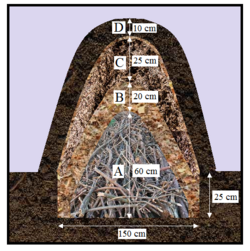| Display title | Earth:Hügelkultur |
| Default sort key | Hugelkultur |
| Page length (in bytes) | 21,298 |
| Namespace ID | 3028 |
| Namespace | Earth |
| Page ID | 288548 |
| Page content language | en - English |
| Page content model | wikitext |
| Indexing by robots | Allowed |
| Number of redirects to this page | 0 |
| Counted as a content page | Yes |
| Page image |  |
| HandWiki item ID | None |
| Edit | Allow all users (infinite) |
| Move | Allow all users (infinite) |
| Page creator | imported>Sherlock |
| Date of page creation | 01:27, 16 March 2024 |
| Latest editor | imported>Sherlock |
| Date of latest edit | 01:27, 16 March 2024 |
| Total number of edits | 1 |
| Recent number of edits (within past 90 days) | 0 |
| Recent number of distinct authors | 0 |
Description | Content |
Article description: (description)
This attribute controls the content of the description and og:description elements. | Hügelkultur (German pronunciation: [ˈhyːɡl̩kʊlˌtuːɐ̯]), literally mound bed or mound culture, is a horticultural technique where a mound constructed from decaying wood debris and other compostable biomass plant materials is later (or immediately) planted as a raised bed. Adopted by permaculture advocates... |

